
Key points
Porsche has added a third battery-electric model to its line-up, confirming a fully electric version of the Cayenne large SUV. Set to arrive in Australia in the third quarter of 2026, the Cayenne Electric doesn’t just expand Porsche’s EV range – it claims the title of the most powerful production Porsche ever, with up to 850kW/1500Nm and a 0-100km/h time of 2.5 seconds.
The electric Cayenne will be offered in two versions: the Cayenne Electric and flagship Cayenne Turbo Electric. Both will sit alongside the existing combustion and hybrid Cayenne line-up, giving buyers three distinct powertrain choices for the first time.
Power is delivered via a ‘newly developed’ 113kWh battery while the WLTP driving range stretches to 642km. Charging performance is equally eye-opening thanks to 400kW DC capability and a 10–80 per cent recharge time of less than 16 minutes.
The Cayenne Electric measures 4985mm long, 1980mm wide and 1674mm tall. That makes it 55mm longer than existing combustion models, while a 130mm longer wheelbase helps unlock more interior space and everyday practicality.
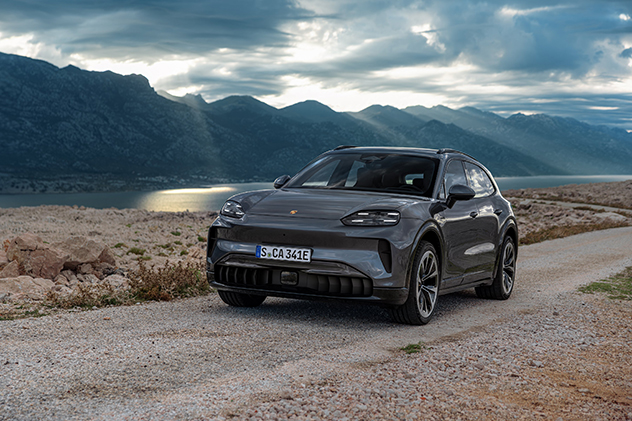
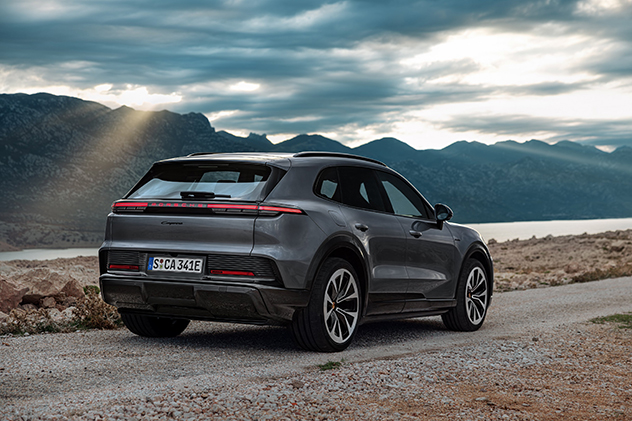

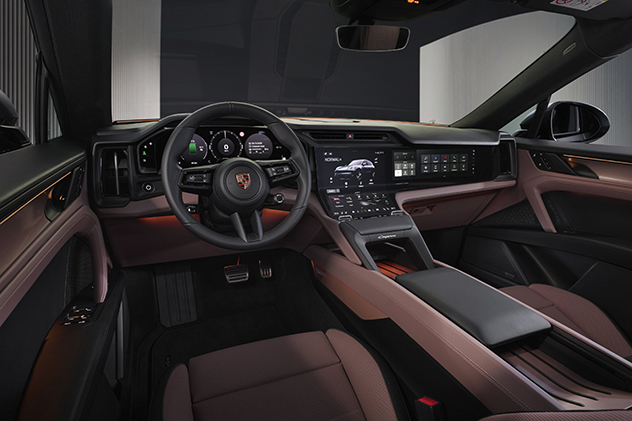
Both Cayenne Electric models are all-wheel drive and feature two electric motors, one per axle. Like the Taycan and Macan EV, the Cayenne Electric rides on Porsche’s 800-volt architecture and power is delivered via a newly developed 113kWh battery.
From a performance perspective, the Cayenne Turbo Electric is the headline act. In its default mode it produces 630kW, but a ‘Push-to-Pass’ function unlocks another 130kW for 10 seconds. With launch control engaged the powertrain peaks at a whopping 850kW/1500Nm, enough for 0-100km/h in 2.5 seconds and 0-200km/h in just 7.4 seconds. Top speed is 260km/h.
To sustain such brutal performance, the Turbo uses direct oil cooling of its rear axle motor – technology Porsche says is lifted directly from motorsport.
The standard Cayenne Electric makes 300kW in normal driving, rising to 325kW/835Nm with launch control. It hits 100km/h in 4.8 seconds with a top speed of 230km/h.
Range is rated at 642km WLTP for the entry model and 623km for the Turbo.
Charging performance should set new benchmarks for large EVs, with a DC peak of up to 390kW (and 400kW under specific conditions). It’s also Porsche’s first model with 11kW inductive charging, meaning you can feasibly top up the Cayenne EV’s battery without actually plugging it in.


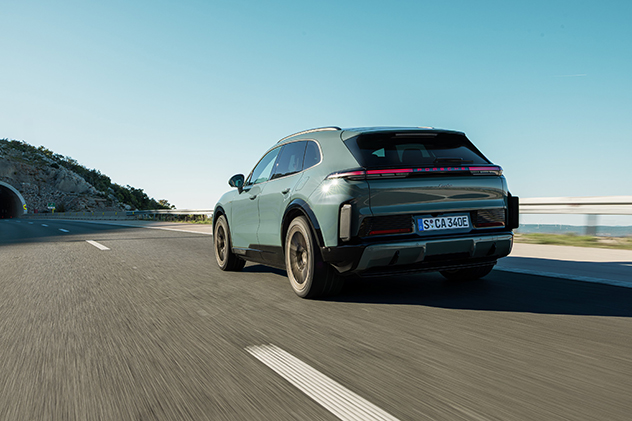
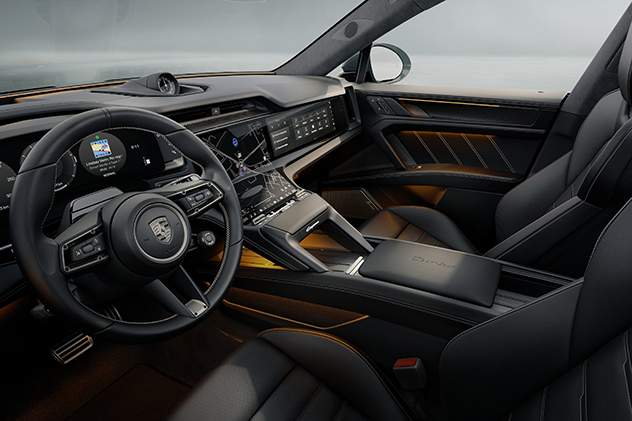
Lots of power and lots of weight mean the Cayenne EV’s chassis hardware will have its work cut out to keep everything in sync and Porsche has included a long list of high-tech systems as standard. This includes adaptive air suspension, Porsche Active Suspension Management (PASM) and rear-wheel steering (optional on the base model). The Turbo adds Porsche Torque Vectoring Plus (PTV Plus) and Porsche Active Ride, which control body movements to maintain a level stance through corners, acceleration and braking.
Active aerodynamics will also play a role, with aero elements in the nose, roof spoiler and rear ‘aero blades’ (Turbo only) all helping to add downforce and reduce drag.
Porsche is stating big numbers when it comes to energy recovery too, with the Cayenne Electric achieving ‘Formula E levels’ of braking recuperation. That’s up to 600kW of recuperative power and Porsche says about 97 per cent of all braking use can be handled purely by the electric motors. That means disc and pad changes should be few and far between.
In saying that, the Cayenne Turbo Electric can be optioned with Porsche’s Ceramic Composite Brake (PCCB) material for heavy/prolonged braking applications on the circuit.
Australian orders are open now, with first deliveries due in Q3 2026.
Cayenne Electric: $167,800
Cayenne Turbo Electric: $259,900
For context, the Cayenne E-Hybrid starts at $164,800, while the Cayenne Turbo E-Hybrid, which produces 544kW and hits 0-100km/h in 3.7 seconds, costs $303,300.
Australian-spec Cayenne Electric models will also receive the following equipment as standard:
Turbo models additionally get:
| Cayenne Electric | Cayenne Turbo Electric | |
| Price | $167,800 | $259,900 |
| Power | 300kW (325kW with launch control) | 600kW (850kW with launch control & Push-To-Pass) |
| Torque | 835Nm (with launch control) | 1500Nm (with launch control) |
| 0-100km/h | 4.8 seconds | 2.5 seconds |
| Top speed | 230km/h | 260km/h |
| WLTP range | 642km | 623km |
| Drivetrain | All-wheel drive | All-wheel drive |